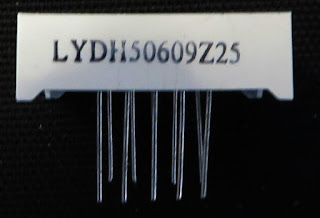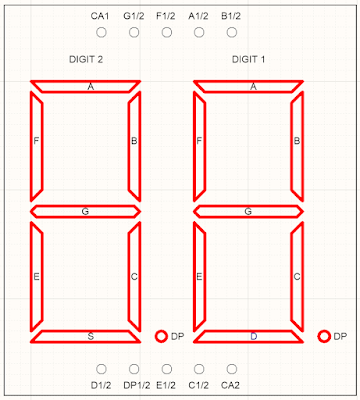Summary
This microblog details the pinouts of a salvaged dual seven-segment red LED with the part number LYDH50609Z25.
 |
| Top View of LYDH50609Z25 |
Device Details
The seven-segment LED was earmarked for the STEM project however when searching online, there was very little information about this LED or the device’s pinouts.
 |
| Part Number View of LYDH50609Z25 |
With a package size of 25.10 mm x 19.05 mm, and 12.6 mm character height (approx.) the display uses two common anode connections per segment. The remaining connections on the LED relate to the seven segments and the decimal point. Each pin has two connections, one from either LED segment (either digit). The same situation applies to the decimal point.
Shown in the image below is a front view of the pin connections and corresponding segments.
The segment letter then numbered suffix 1/2 indicates that the two LED cathodes from each of the digit segments connect to that pin. The text CA1 and CA2 indicate the common anode connections.
 |
| Pinouts of LYDH50609Z25 |
Segments are illuminated brightly with a forward voltage of 1.8 V at 10 mA.
 |
| Testing LYDH50609Z25 |







